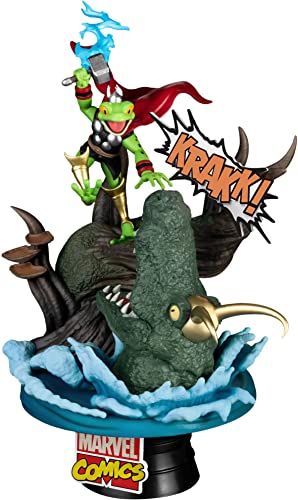I seem to remember catching something like that, but really, with dinosaurs it's all speculation.
Growing up, every portrayal of a T-Rex, be it a book or a museum skeleton or statue, they all had Rex's looking almost like Godzilla, standing upright with just a slight angle to their posture, then JP came along and made Rex elongated like an iguanna or something.
I'd probably still get a Dilophosaurus without the frill, the head is neat in desing too as is the color scheme, but the frill with the oranges, yellows and reds is just really cool.
There is a measure of speculation, but the inferences made are usually solid and have a basis in the fossil record. For example, the stance of T.rex in JP was for the purpose of accuracy with all large theropods. The elongated, heavily built tails were products of evolution to help counterbalance the enormous skulls used to bring down prey. It's best seen in Tyrannosaurids and Carcharodontosaurids which tend to have the most heavily-fortified skulls, even with dermal indents where we can go so far as to determine where there were ossified or cartilaginous growths on the skull either for purposes of battling or ornamentation. T.rex, for instance had dermal ridges over its orbital and across the roof if its naris - this is how we know in interpreting Tyrannosaurus rex to add the more pronounced ridges over the eyes and atop the nose.
Speculation largely concerns behavior, based on inferences with modern animals, particularly birds and reptiles. With anatomical traits, as least when skeletons are largely complete, we can tell with relatively great accuracy how the animal was physically built. Even if a skeleton is partially complete, we can look at the bones we do have, trace morphology, and see what the physical traits are of other related dinos with phylogenetic bracketing. There's guess work, yes, but not so much when it comes to appearance... features like coloration obviously aside.
The frill on the Dilophosaurus, as well as the venom glads, were original literary constructs of Michael Crichton that there is no evidence for whatsoever. Largely it was to make the Dilophosaurus stand out from the other theropods in the story. T.rex is readily recognizable and imposing because of sheer size (and a remarkable intelligence among large theropods). Velociraptor was distinguished by speed, agility, its killing claw on the middle toe of each foot, pack behavior, and last but not least its remarkable cognitive capabilities. To shake things up, the Dilo possess the added distinctive frill to distract prey long enough to cause blindness and paralysis with venom akin to a spitting cobra. I thought it was a nice touch in the novel for Crichton to add that they attempted to surgically locate and remove the venom glands, but when they were fortunate enough to locate them, the organs proved remarkably hearty with excellent regenerative capabilities.
It's also important to note that the Dilo we saw on film in JP was intended to be a
juvenile. The fully-grown adults were fully eight feet tall.




















